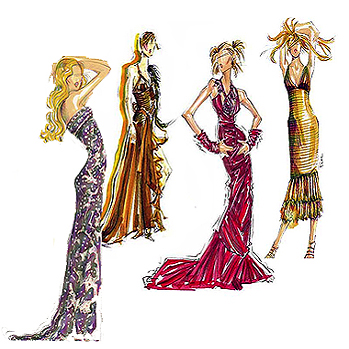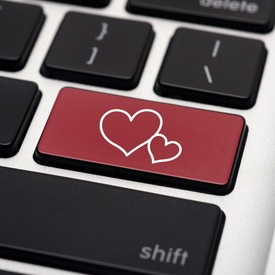
NYCFashionista
New York, NY
Female, 33
I’m the Creative Director/CEO/Jill-of-all-trades at my very own cold-weather fashion accessory business. I design and market a line of knit-based fashion accessories (scarves, gloves, hats) aimed at the contemporary market. My work can be found in several specialty boutiques in the US and Asia.
If you're looking to build your resume by apprenticing with a top designer, the good news is that yes, you can avoid New York! You can build your career in London, Los Angeles, Paris, and Milan as these are also major centers of fashion in the world. But if apprenticing is not your cup of tea, you can work remotely out of virtually any location as long as you have dependable Internet connection to sell your designs and PR skills to promote your line to anyone who will listen.
It irks me that the commodification of labor and materials have caused people to devalue the intangibles - design skills, materials innovation and creativity. These skills cost money to develop and nurture in a fashion company -- only makes sense to reward designers/fashion companies for it! Having said that, the fashion industry with its short, fast-paced sales/design cycles somewhat forces designers to copy and capitalize on trends. It's a more complicated issue with no easy answers.
Unless a brand owns its own manufacturing facility, it's a difficult and expensive strategy to implement. Manufacturers live and die by volume. Mainstream brands who have this service (e.g. Nike) typically treat it as a fringe project/business aimed at brand loyalists and for buzz. They can engage in this sort of business because their ready-to-wear business pays the bills. Niche bag company Freitag also has a custom business, but I have a feeling their ready-to-wear business props that up as well. I have yet to see a mainstream company that is built entirely on the premise of customization.
Have not yet tried pinterest but did hear that the interface was great and a delight to use. Visuals can be so much more evocative than words can ever be so Im grateful theres a program out there that helps me better express, share and communicate my ideas. The fashion industry is all over it because much like polyvore designers and buyers can freely pick up on trends that will translate to more sales in stores.
Hollywood Executive Assistant
 Are Hollywood execs as nightmarish as depicted on TV?
Are Hollywood execs as nightmarish as depicted on TV?
Call Center Representative
 Are you allowed to hang up on a caller if they're being very rude?
Are you allowed to hang up on a caller if they're being very rude?
Dating Website Employee
 What are the most common mistakes guys make on out their profiles?
What are the most common mistakes guys make on out their profiles?
Can't really speak to whether people are getting bigger but clothing sizes has become a ad hoc / relative measurement and should be thought of primarily as tool fashion companies use to sell more clothing and nothing more. If anything, clothing sizes have been dropping and you can see why that makes sense- let's say you're typically a size 8, you walk into a store and happily discover that you're now fitting into a size 6 - you feel good and more likely than not, you will end up purchasing the garment. This is an industry phenomenon called vanity sizing. Tim Gunn of Project Runway/Parsons-fame had harsh things to say about this: http://www.mamapop.com/2011/09/tim-gunn-blasts-deceptive-shell-game-of-vanity-sizing.html To be sure, fashion schools do teach students what the standard sizes are -- not sure who came up with the standards -- but these measurements are pretty dated and were probably developed using a homogeneous population that's no longer relevant to our new multi-cultural, global fashion market.
Impact" can mean a couple of things. Sales can get a strong lift if popular, relevant, and aspirational celebrities wear certain market-ready, in-store styles: Kate Middleton, Michelle Obama, and (ulp) Kim Kardashian. The dress Kate Middleton posed in for her engagement photos 2 years ago continues to be reissued by Reiss 4 seasons later! Impact can also mean setting the course for a trend to bubble up in a couple of years. Gaga's outfits are definitely not market ready but her penchant for over-the-top crystals is slowly making it's way into styles for next fall, to give one example. But I can't really think of one celebrity pulling the shots in the fashion world today - that tells you something about how fragmented and niche-driven the fashion business has become!
At the last Market Week, I showed infinity scarves that featured bright, almost saccharine-neon, colorways. Some of my color choices were risky, but I made sure to merchandise those with more commercial, "safer" colorways. I think buyers appreciate that kind of restraint and commercial sensibility. Anthropologie just picked up the line for the fall.
-OR-
 Login with Facebook
Login with Facebook (max 20 characters - letters, numbers, and underscores only. Note that your username is private, and you have the option to choose an alias when asking questions or hosting a Q&A.)
(A valid e-mail address is required. Your e-mail will not be shared with anyone.)
(min 5 characters)
By checking this box, you acknowledge that you have read and agree to Jobstr.com’s Terms and Privacy Policy.
-OR-
 Register with Facebook
Register with Facebook(Don't worry: you'll be able to choose an alias when asking questions or hosting a Q&A.)